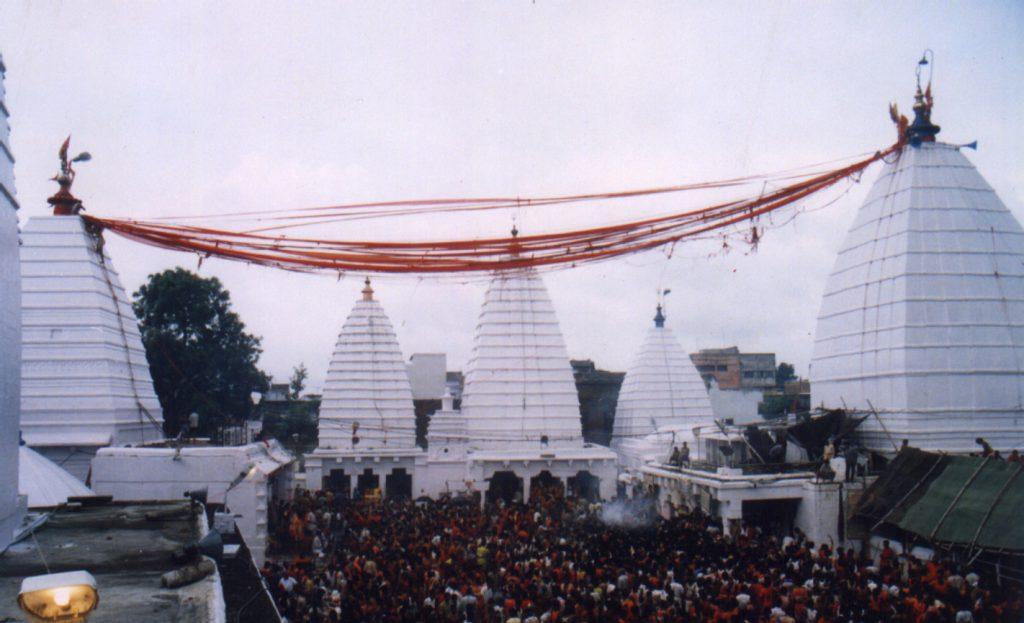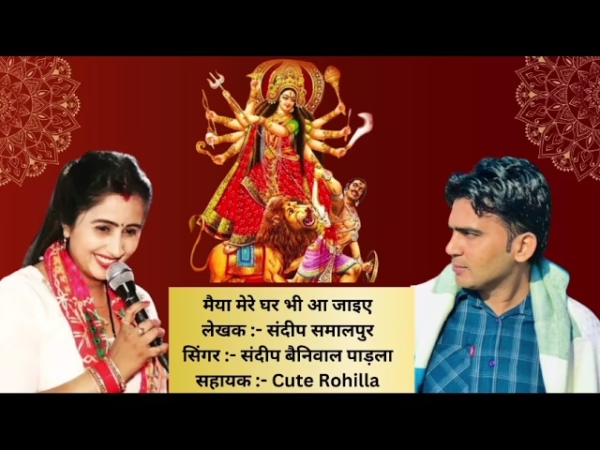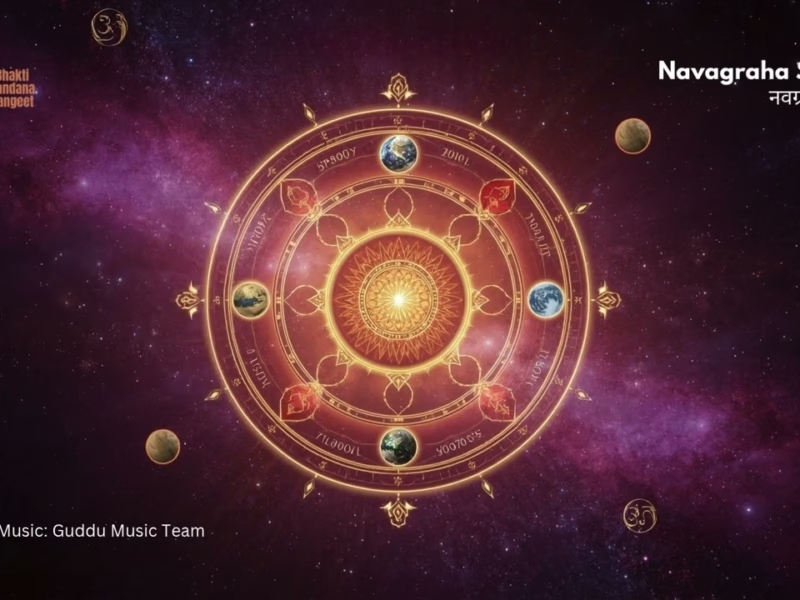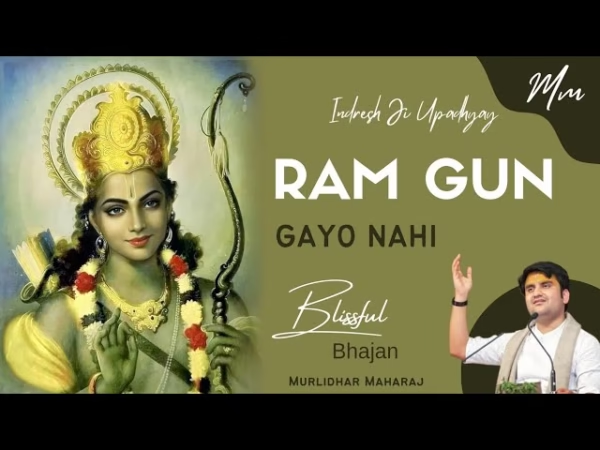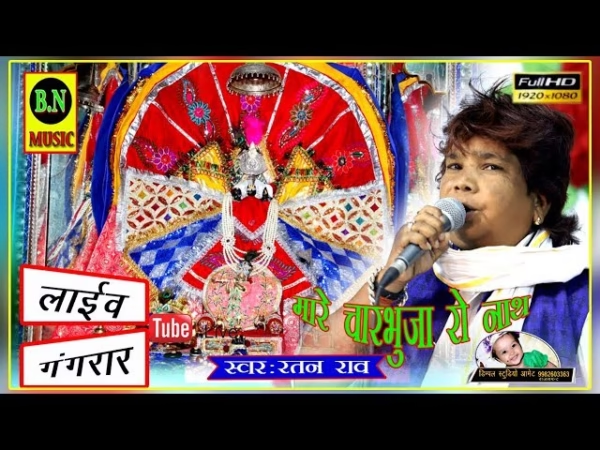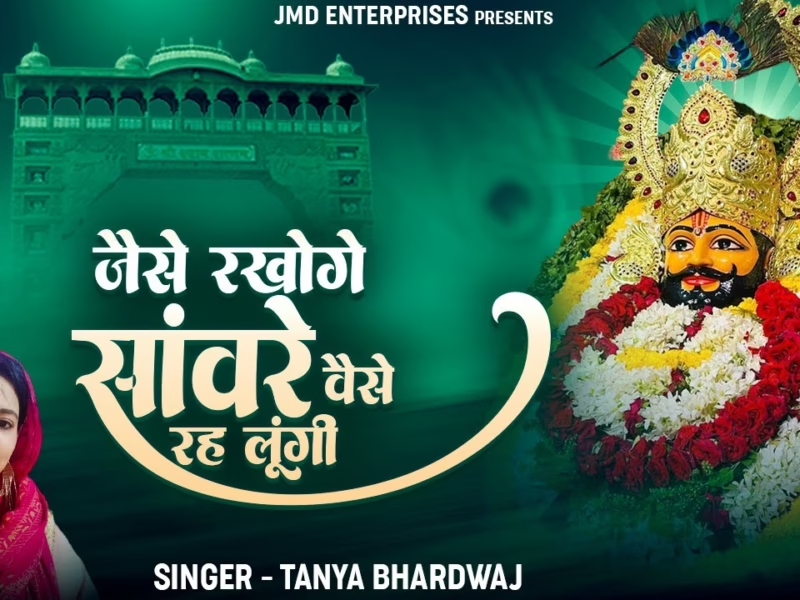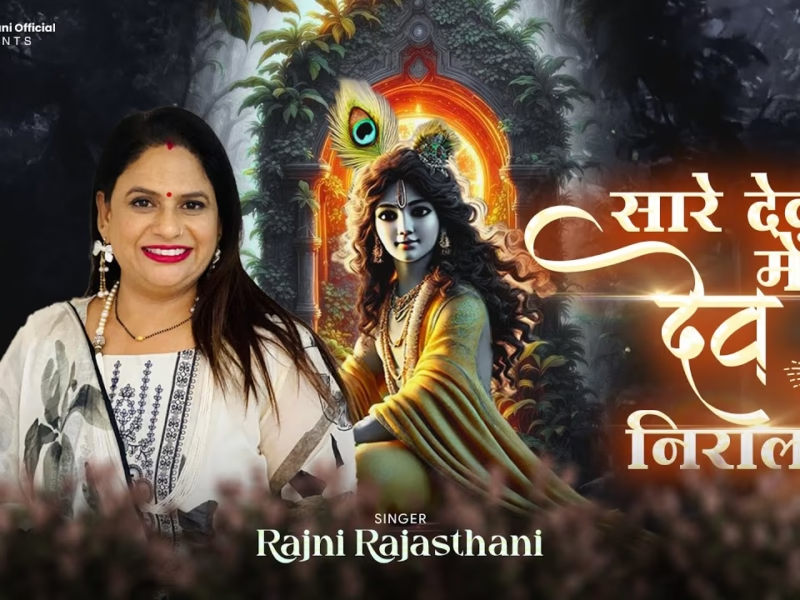Contents
Official Website: http://babadham.org/
About Baidyanath Temple
Baidyanath Temple is dedicated to Lord Shiva. The three important fairs held here are Shri Panchami mela held in January, Shivaratri mela held in March and the Bhadra Purnima Mela held in September. The Shivaratri festival is attended by several visitors in the course of a fortnight. In 1596, a hunter by the name of Baiju, discovered the lost lingam. Since then it came to be known as Baidyanath and people also call it Kamma Lingam – the desire fulfilling lingam.
The lingam installed inside, is of a cylindrical forming about 5 inches in diameter and projects about 4 inches from the centre of a large slab of basalt. It is not possible to ascertain how much of the lingam is buried. The top is broken and has uneven surface.
The top contains three ascending shaped gold vessels that are compactly set, and were donated by the Maharaja of Giddhaur. Besides these pitcher shaped vessels, there is a Punchsula (Five knives in Tridenta shape), which is rare. In the inner top there is an eight petaled lotus jewel called Chandrakanta Mani. There are different porches in the temple. One porch leads to the cell where the lingam is fixed. The second porch is in front with a row of pillars spanned by blocks of basalt and on the right side there is a sandstone image of nandi. There are bells fixed in the ceiling and pilgrims are supposed to pull the bell ropes to announce their approach to the divinity. To the east of the northern verandah of the temple there is a large masonry vat into which flows the water and milk offered to the lingam. The liquid in it is essentially a mix of milk, sandal paste and washing of flowers, which impart to it a fragrant smell and is treated as highly sacred.
Legends / Mythology
According to Hindu mythology, Ravana went to Mount Kailash and prayed to Lord Shiva, who gave him a Jyotirlinga to take to his land, with the promise not to place the lingam anywhere else. In case that happened, the lingam would remain fixed on that spot forever. The gods, who were unhappy at the prospect of the divine lingam being established in the enemy kingdom, which would render them powerless against their adversary, worked a trick on Ravana. Meanwhile, Vishnu disguised as an old brahmin, befriended Ravana and offered himself to hold the jyotirlinga for a minute. He mistakenly handed over the lingam to a brahmin, who grounded it at Deoghar. Ravana did his best to uproot it but beyond breaking the tip he was unsuccessful. Out of frustration, he pressed it with his thumb so it went inside and got tilted slightly.
However, failing to remove the lingam, he made his obeisance to the lingam and daily he used to come from Lanka and worship the divinity. The spot where Ravana came down to the earth has been identified with Harila Jori, about four miles north of Babadham and the place where the lingam was deposited is known as Babadham.
Legend 2: It is said that the lingam, after the death of Ravana, used to be worshipped by a hunter Baiju, and the lingam came to be known by Baiju’s name as Baidyanath. The story of Baiju giving rise to the name of Baidyanath is more prevalent as a Santhal tradition.
Legend 3: Another legend states that in Satya Yuga, when Sati – the consort of Shiva and daughter of Daksha- committed suicide because of the discourtesy shown towards her husband Lord Shiv by her father Daksha. Lord Shiva stuck the corpse of his wife on the point of his trident and roamed about in a frenzy of fury. Lest Shiva’s anger and frantic movements should destroy the world, Vishnu cut the dead body with his discus into fifty-two parts, which fell in different parts of India and became Mahapithasthans. According to the legend, the heart of Sati fell at Babadham. Hence, the name Hridayapeeth.
Legend 4: Another legend is that, in the first age of the world, Lord Shiva manifested himself as a lingam of light at twelve different places under different names, and Baidyanath was one of those twelve places. Sati worshipped the emblem in the form of a pandanus flower on the top of the lingam and dwelt for a long time in a grove close by in order to worship it. This place is called Ketakivana.
History
The history of Babadham has been derived from various manuscripts and also the inscriptions at various places in the Temple area.
Man Singh remained attached to the Gidhaur dynasty for a long time and had contacts with a number of rulers of Bihar. Man Singh’s brother, Bhan Singh was married to daughter of Puran Mal. Man Singh’s interest in Babadham seems to have been determined by his love for this holy shrine because he then got a tank excavated, which is today known as Mansarovar.
Puran Mal’s inscription proves his connection with the Babadham temple. An inscription on the Baidyanath temple states that he built it at the request of the priest Raghunath Ojha. Tradition relates that the inscription was forcibly put by Puran Mal, after he had the temple repaired, to mark his ownership of the surrounding land. Raghunath Ojha was displeased with the inscription, but was unable to resist Puran Mal. Hence, after Puran Mal was gone, he had a porch created and therein set his own inscription. The legend states that the priest fasted for some days at the gate of Baidyanath who revealed to him in a dream that he should build a new porch and set up an inscription. But he claims the credit of having created the entire temple.
In 1757 after the battle of Pallsy the officers of the East India Company paid their attention to this temple. An English man, Keating was sent to look at the administration of the temple. Mr. Keating, the first English collector of Birbhum, took interest in the administration of the temple. In 1788, under Mr. Keating’s order Mr. Hesilrigg, his assistant, who was probably the first English man to visit the holy city, set out to supervise personally the collection of the pilgrim offerings and dues. Later, when Mr. Keating himself visited Babadham, he was convinced and forced to abandon his policy of direct interference. He handed over the full control of the temple to the hands of the high priest.
How to reach
Baidyanathdham can be reached by train or road. Jaisidih station, on the Howrah-Patna rail line of Eastern Railway, is just 7 km away. Regular bus services from Ranchi and Patna are available. From Bhagalpur, this pilgrimage site is about 80 km.
Darshan Timings
Timings: 4:00 AM to 3:30 PM, and 6:00 PM to 9:00 PM
The temple opens at 4:00 AM daily. The Head priest worships with Shodashopachar. The Puja rituals continue till 3.30 PM After this the temple doors are closed. The temple then opens at 6:00 PM for Shringar Puja. The temple closes at 9:00 PM
Place stay:
The temple administration provides accommodation (Rooms & Dormitory) for the pilgrimages inside the temple complex at Uma Bhawan. For bookings, interested devotees and travel agents can contact the following numbers of the Baba Mandir office: Baba Mandir Office, Deoghar – Phone No. 06432-232295
There are affordable hotels and dharmashalas in Deoghar at Jasidih.
Contact Details
Deputy Commissioner Deoghar and Chief Executive Officer
Baba Baidyanath Temple Management Board, Government of Jharkhand, Jharkhand, INDIA
Phone: (91-6432) 232680 (Office), 232720 (Residence)
District Public Relation Officer-cum-Temple Magistrate
Baba Baidyanath Temple Management Board, Government of Jharkhand, Jharkhand, INDIA
Phone: (91-6432) 232680 (Office), 232295 (Temple)
Mobile: 9431418752
Fax: (91-6432) 232967
Email: contact@babadham.org
Browse more temples in Jharkhand state

